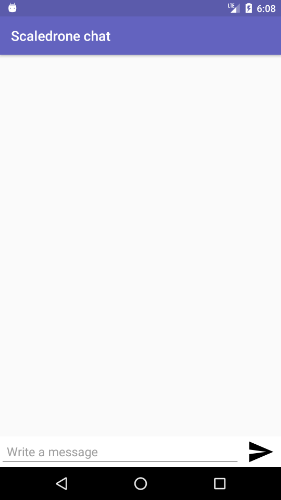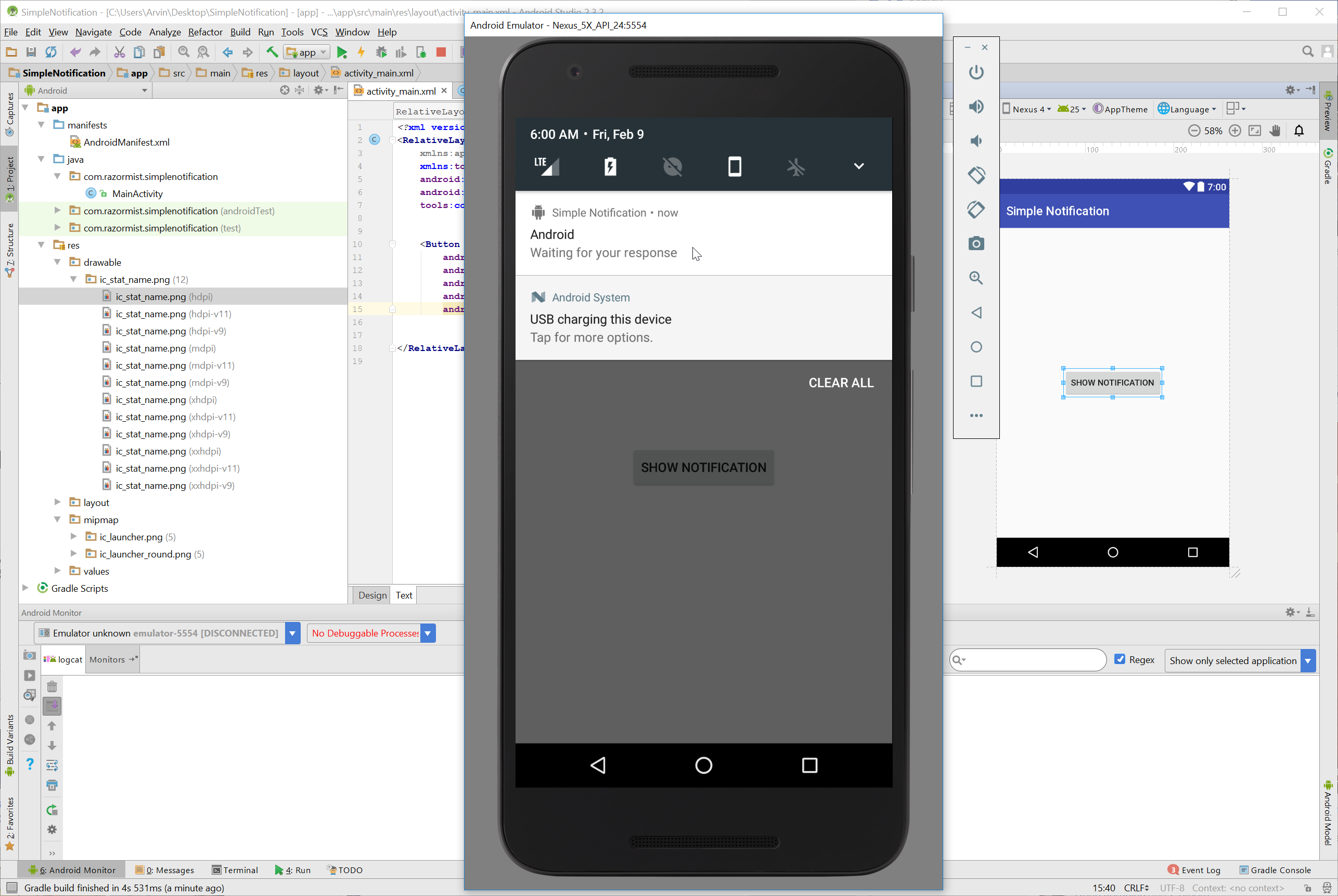



- SIMPLE ANDROID APP TUTORIAL MESSAGE HOW TO
- SIMPLE ANDROID APP TUTORIAL MESSAGE INSTALL
- SIMPLE ANDROID APP TUTORIAL MESSAGE CODE
Additionally, before jumping into this tutorial, I recommend checking out our Android in-app messaging tutorial, which will walk you through how to implement Stream Chat from a high-level overview.
SIMPLE ANDROID APP TUTORIAL MESSAGE CODE
Note that all source code for this example Android app is available on GitHub. The example app embeds Virgil Security's eThree Kit – a secure encrypted messaging platform – with Stream Chat's Android components. These two services allow developers to integrate chat that is zero knowledge to your backend or Stream. Stream and Virgil make it easy to build a solution with excellent security by combining all of the features you would expect as a developer when creating a messaging app. To do this, we will combine the Stream Chat Platform and Virgil Security. Import 7.app.In this tutorial, we'll build an encrypted chat/messaging example app for Android. In the following code abc indicates the logo of Here is the content of MainActivity.java.
SIMPLE ANDROID APP TUTORIAL MESSAGE INSTALL
Run the application and choose a running android device and install the application on it and verify the results. Modify layout XML file res/layout/activity_main.xml add any GUI component if required. Modify src/MainActivity.java file to add Notification code. You will use Android studio to create an Android application under a. To experiment with this example, you need to run this on an actual device or in an emulator. It crates a basic application that allows you to create a notification. The below example demonstrates the use of NotificationManager class. This method also Post a notification to be shown in the status bar. Notify(String tag, int id, Notification notification) This method post a notification to be shown in the status bar. Notify(int id, Notification notification) This method cancel all previously shown notifications. This method also cancel a previously shown notification. This method cancel a previously shown notification. tLatestEventInfo(getApplicationContext(), subject, body,pending) Īpart from the notify method, there are other methods available in the NotificationManager class. And then finally call the notify method of the NotificationManager class. The last thing you need to do is to call setLatestEventInfo method of the Notification class and pass the pending intent along with notification subject and body details. PendingIntent pending = PendingIntent.getActivity(getApplicationContext(), 0, new Intent(),0) By giving a PendingIntent to another application, you are granting it the right to perform the operation you have specified as if the other application was yourself. The next thing you need to do is to create a PendingIntent by passing context and intent as a parameter. Notification notify = new Notification(android.R.drawable.stat_notify_more,title,System.currentTimeMillis()) NM=(NotificationManager)getSystemService(Context.NOTIFICATION_SERVICE) Īfter that you will create Notification through Notification class and specify its attributes such as icon,title and time e.t.c. In order to use this class, you need to instantiate an object of this class by requesting the android system through getSystemService() method. You can create your own notifications in android very easily.Īndroid provides NotificationManager class for this purpose. A notification is a message you can display to the user outside of your application's normal UI.


 0 kommentar(er)
0 kommentar(er)
